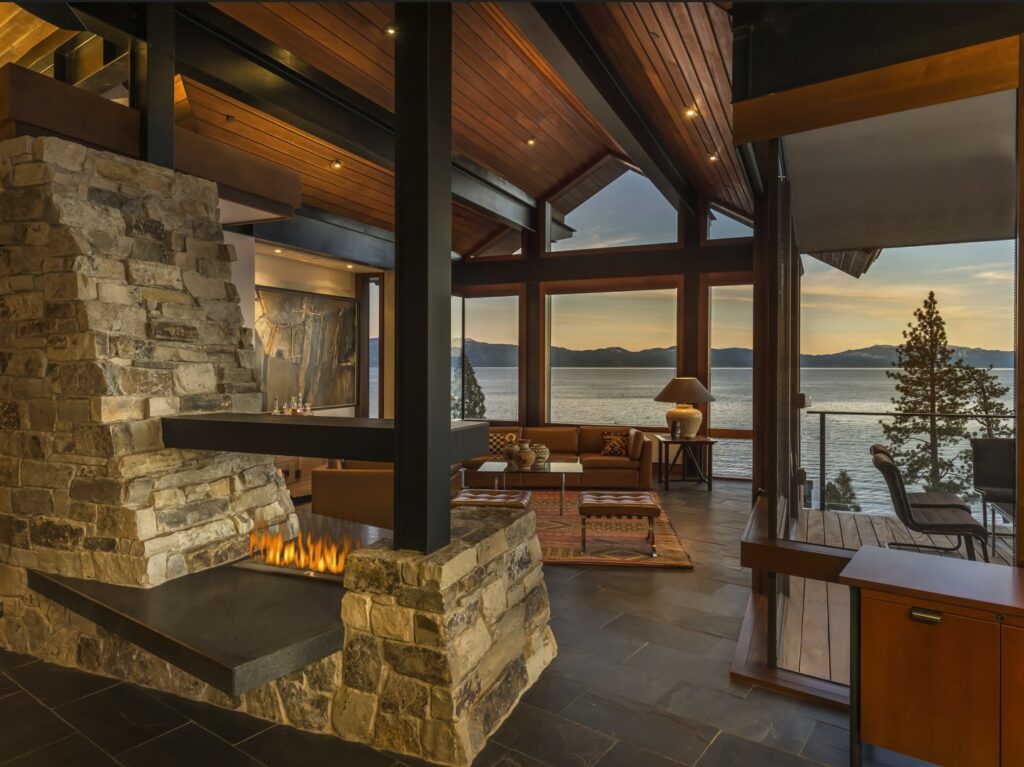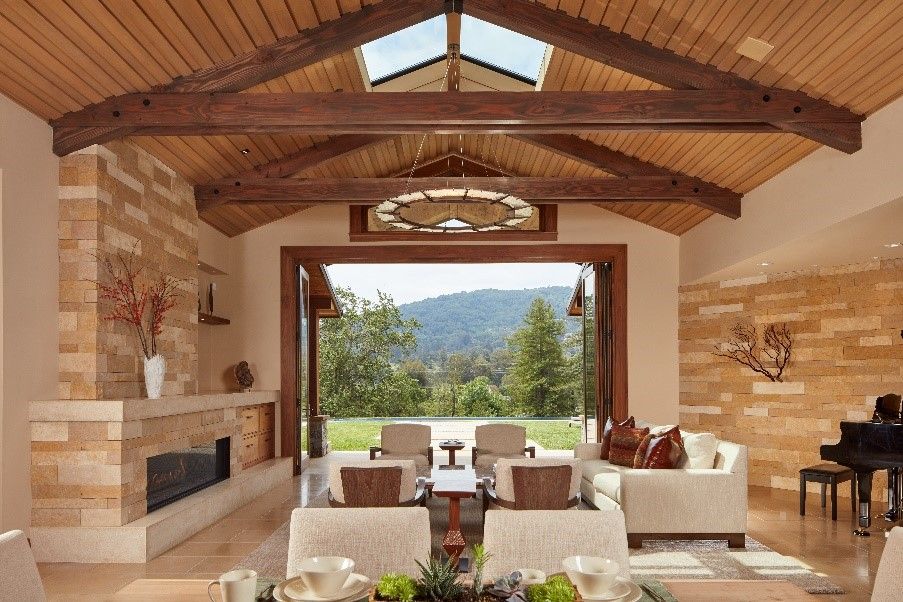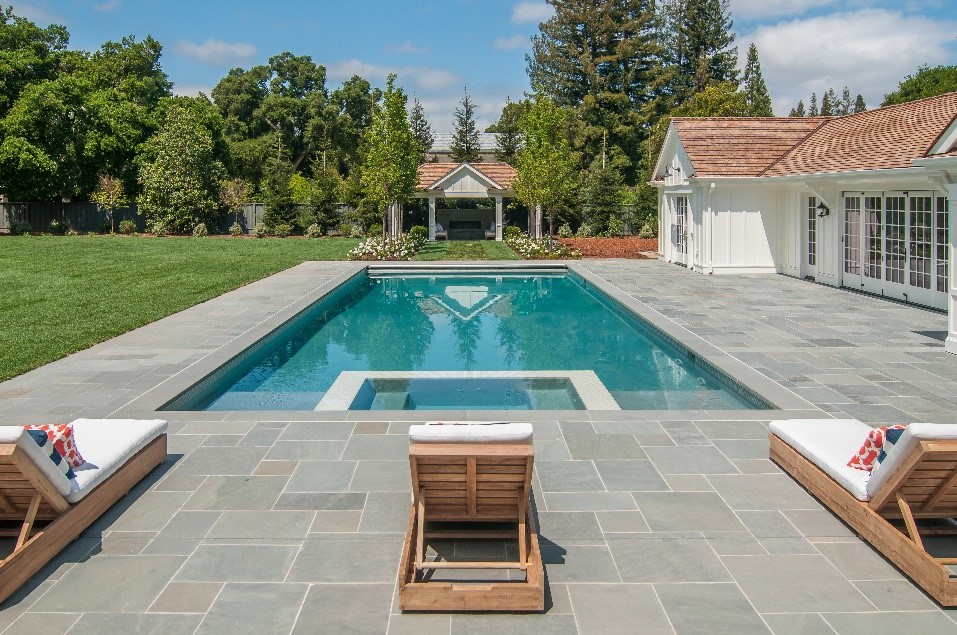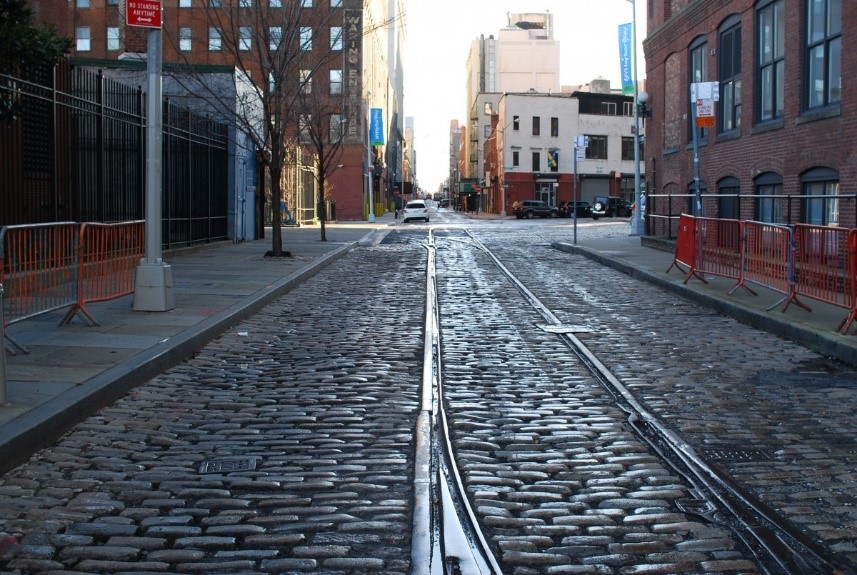Chiseled: A Natural Stone Conversation

Your friends walk into your home and see the new natural stone fireplace. You hear oh my, how lovely. Someone else says where did you get that? You smile, turn to your spouse and say do you want to tell the story or should I?
Natural stone draws the eye. It connects us to something we can’t quite explain. Timeless. Soothing. And while most of us don’t build entire homes from rock these days, some may be lucky enough to add stone accents or pathways—a touch of craftsmanship to highlight your property.
Before we get to what natural stone can do for your home, let’s slow down and talk about how this stuff is made.
Production Process:
Millions of years, that’s the timescale. Add pressure and heat, throw in minerals and fossils and ice ages and tectonic shifts. Then the earth births stone. Prized for its durability, beauty, and unique aesthetic, natural stone is forever en vogue. And thanks to a continued drive from the industry, this natural material can be quarried sustainably, without depleting our precious non-renewable resources. The modern production process requires specialized equipment, skilled labor, and careful attention to quality control. All this to ensure the end result: a stunning and long-lasting building material that has been used since the first of us. Hewing natural stone carries different processes depending on the type. So we connected with Jon Wood from Glacier Stone to walk us through the basics.
Quarrying

First, we identify natural stone deposits through core sampling or other non-invasive methods. Then come plans and measurements. Heavy machinery removes topsoil and rock known as overburden. And finally, we extract the stone by way of:
- Blasting
- Drilling
- Cutting
Talus quarries, found in Montana, are rock formations accumulated at bases of chutes or slopes. Unlike deep pit quarries commonly used in sandstone and limestone formations, talus rocks are harvested using surface excavation.
Cutting and Shaping
After extraction, the raw stones are transported to processing facilities where they’re cut and shaped using splitters, saws, and other specialty tools. Now we have:
- Slabs
- Full stone
- Thin veneer
Quality Control
Throughout the production process, we inspect for cracks, flaws, and other defects to ensure strength and durability.
Finishing
Next, we need to finish the stone. Many options are available here. This may involve grinding, sanding, or polishing with the intention of removing blade marks left during sawing. Common finishes include:
- Thermalled
- Sandblasted
- Polished
- Honed
- Brushed
- Bush hammered
And common stones to finish include:
- Limestone
- Travertine
- Marble
- Quartzite
- Basalt
Beautifying Spaces With Natural Stone

Ok. Now we can talk about the good stuff—how to make your home look exquisite. Manufactured stone companies make great products, no question. But nature makes the best. Have you ever noticed that nature never makes aesthetic mistakes? Look at rivers or clouds. Or stones. Depth, color, clefting, and topography of natural stone not only play true to the eye, but you can feel the difference between your hands, and your feet.
Thanks to the ever-growing natural stone thin veneer market, it is now possible to install natural stone onto nearly any surface—beautifying your home inside and out. Natural stone veneers qualify as thin veneers when weighing under 15 lbs/sqft—a great solution for interior walls. Add charm, character and a sense of permanence to any space with natural stone thin veneer.
Whether working on floors or walls, consider these areas for natural stone:
- Interior Fireplaces
- Kitchen Backsplashes
- Accent Walls
- Outdoor Pathways
- Door Landings
- Pools
- Patios
- Seating Walls
- Fire Pits
- Outdoor Kitchens
Durability:
There’s no worse feeling than fixing a project that could’ve been done right the first time. Other than quality installation, going with cheap materials will usually get you in trouble. Or at least it’ll show in a few years. The durability of natural stone is like no other building material. There’s a reason the ancients left all their wisdom carved in stone. And because it doesn’t require regular replacement, natural stone reduces the amount of waste we’re chucking into landfills. Natural stone is highly resistant to the great decomposers: sun and water. One of the only threats posed to natural stone is heavy loads dropped on small areas, chipping or cracking may occur. But it takes some real effort to manage that. Conversely, imagine your four-year-old on a sugar rush running through the backyard, a cup of red juice in hand. She laughs, turns her head, trips and spills the great red death across your new manufactured veneer. Will you still love her?
Go Green
Natural stone is Mother Nature’s original green building material because it’s sustainably sourced and doesn’t require energy-intensive production processes. And natural stone is non-toxic, emitting no harmful VOCs (volatile organic compounds) or other pollutants. And should you ever want to change your design, natural stone can be recycled, used as repurposed building material or crushed into aggregate.
Collaboration with Glacier Stone Supply
Thank you to Jon Wood of Glacier Stone Supply for collaborating with us on this two-part series on natural stone. To gather more inspiration and ideas on natural stone, check out the Peninsula Building Materials website. Or check out the Peninsula Building Materials Pinterest pages for more ideas:
Natural Stone in Contemporary Style
Natural Stone for Your Beach House
Thank you for reading the Design & Build Blog. If you have any questions or a topic you’d be interested in learning more about – leave us a comment below or on our social media. Even better, you can reach out to us directly.




